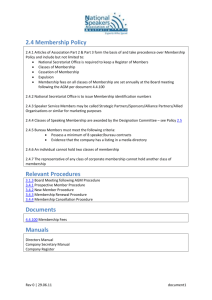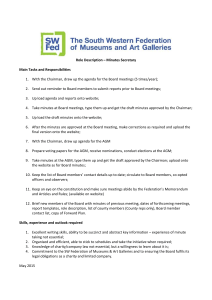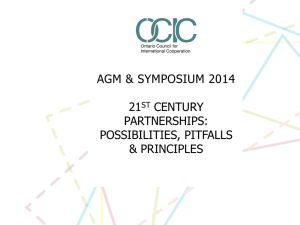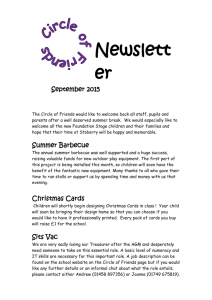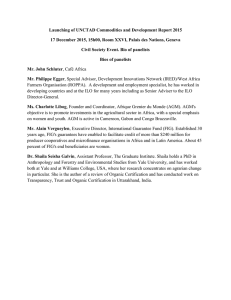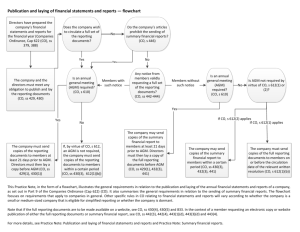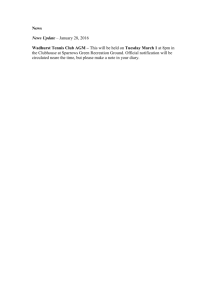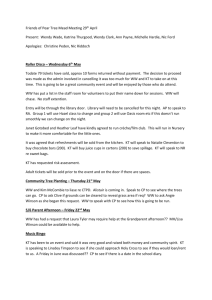Asian Gypsy Moth
advertisement
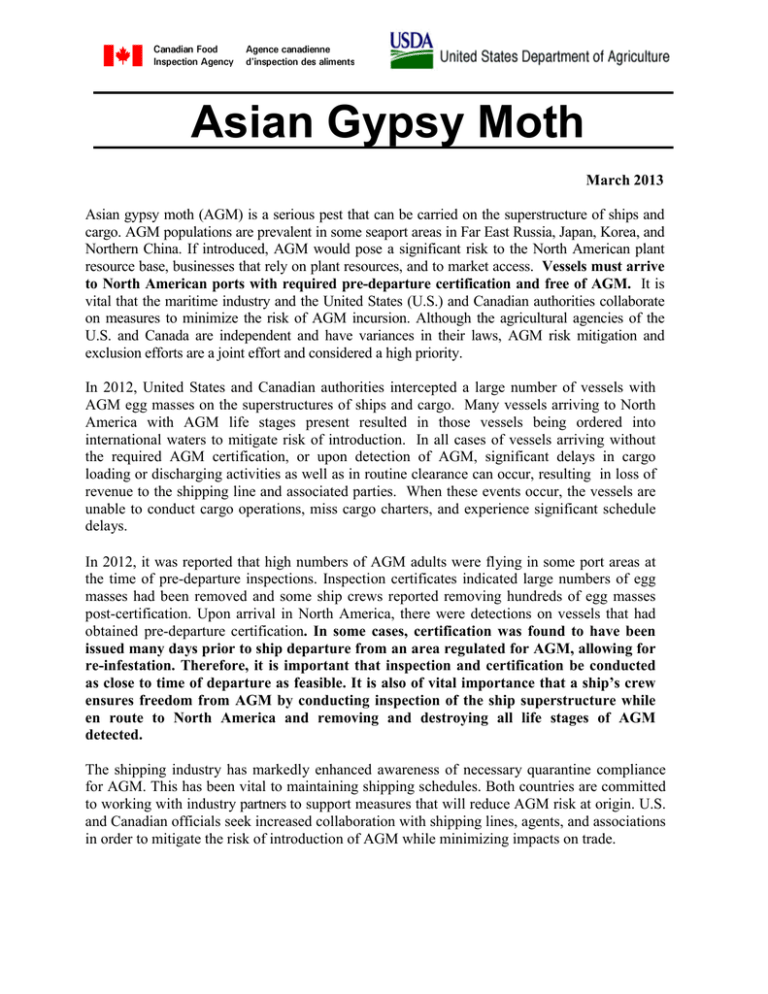
Asian Gypsy Moth March 2013 Asian gypsy moth (AGM) is a serious pest that can be carried on the superstructure of ships and cargo. AGM populations are prevalent in some seaport areas in Far East Russia, Japan, Korea, and Northern China. If introduced, AGM would pose a significant risk to the North American plant resource base, businesses that rely on plant resources, and to market access. Vessels must arrive to North American ports with required pre-departure certification and free of AGM. It is vital that the maritime industry and the United States (U.S.) and Canadian authorities collaborate on measures to minimize the risk of AGM incursion. Although the agricultural agencies of the U.S. and Canada are independent and have variances in their laws, AGM risk mitigation and exclusion efforts are a joint effort and considered a high priority. In 2012, United States and Canadian authorities intercepted a large number of vessels with AGM egg masses on the superstructures of ships and cargo. Many vessels arriving to North America with AGM life stages present resulted in those vessels being ordered into international waters to mitigate risk of introduction. In all cases of vessels arriving without the required AGM certification, or upon detection of AGM, significant delays in cargo loading or discharging activities as well as in routine clearance can occur, resulting in loss of revenue to the shipping line and associated parties. When these events occur, the vessels are unable to conduct cargo operations, miss cargo charters, and experience significant schedule delays. In 2012, it was reported that high numbers of AGM adults were flying in some port areas at the time of pre-departure inspections. Inspection certificates indicated large numbers of egg masses had been removed and some ship crews reported removing hundreds of egg masses post-certification. Upon arrival in North America, there were detections on vessels that had obtained pre-departure certification. In some cases, certification was found to have been issued many days prior to ship departure from an area regulated for AGM, allowing for re-infestation. Therefore, it is important that inspection and certification be conducted as close to time of departure as feasible. It is also of vital importance that a ship’s crew ensures freedom from AGM by conducting inspection of the ship superstructure while en route to North America and removing and destroying all life stages of AGM detected. The shipping industry has markedly enhanced awareness of necessary quarantine compliance for AGM. This has been vital to maintaining shipping schedules. Both countries are committed to working with industry partners to support measures that will reduce AGM risk at origin. U.S. and Canadian officials seek increased collaboration with shipping lines, agents, and associations in order to mitigate the risk of introduction of AGM while minimizing impacts on trade. Actions For vessels which have called on areas regulated for AGM during the specified periods, as outlined below, the following measures are required: Country Russian Far East People's Republic of China Port or Prefecture Nakhodka, Ol'ga, Plastun, Pos'yet, Russkiy Island, Slavyanka, Vanino, Vladivostok, Vostochny, Zarubino, Kozmino All ports in northern China, including all ports north of Shanghai Republic of Korea All ports Japan – Northern Hokkaido, Aomori, Iwate, Miyagi, Fukushima Japan Western Akita, Yamagata, Niigata, Toyama, Ishikawa Japan - Eastern Japan - Southern Japan - Far Southern Fukui, Ibaraki, Chiba, Tokyo, Kanagawa, Shizuoka, Aichi, Mie Wakayama, Osaka, Kyoto, Hyogo, Tottori, Shimane, Okayama, Hiroshima, Yamaguchi, Kagawa, Tokushima, Ehime, Kochi, Fukuoka, Oita, Saga, Nagasaki, Miyazaki, Kumamoto, Kagoshima Okinawa Specified Period July1 to September 30 June 1 to September 30 June 1 to September 30 July 1 to September 30 June 25 to September 15 June 20 to August 20 June 1 to August 10 May 25 to June 30 1. Vessels must be inspected and obtain pre-departure certification from a recognized certification body located in a regulated area and forward a copy of the certificate, stating that the vessel is free of Asian gypsy moth life stages, to their U.S or Canadian agents. The inspections should be performed as close to departure time from the regulated port as possible. 2. Vessels must arrive to North American ports free from AGM. To avoid facing inspection delays, re-routing and other potential impacts associated with mitigating the risk of entry of AGM to North America, shipping lines should perform intensive vessel self-inspections to look for, remove (scrape off) and properly dispose of or destroy all egg masses and other life stages of AGM prior to entering U.S. and Canadian ports. 3. Vessels must provide two year port of call data, at least 96 hours prior to arrival at a North American port, to the Canadian or U.S. agent. The agent will ensure that this information is provided to U.S. and Canadian officials. It is the responsibility of the shipping lines to meet all requirements for entry to the U.S. and Canada for freedom from AGM and other pest concerns. The risk for introduction of AGM into North America from Far East Russia, Japan, Korea, and Northern China is considered to be high for 2013. We strongly urge maritime interests to take all possible precautions. Please be advised that, although the U.S. and Canada are in full agreement on the requirement for AGM pre-departure certification and vessels arriving free from all AGM life forms (egg masses, pupae, adults), due to sovereign regulations and policies, there remain differences in port-of-entry processes between the two countries. Please contact local inspection authorities in the port of entry if you have any questions regarding AGM import requirements or clearance procedures. APHIS Protecting American Agriculture Equal Opportunity Employer
